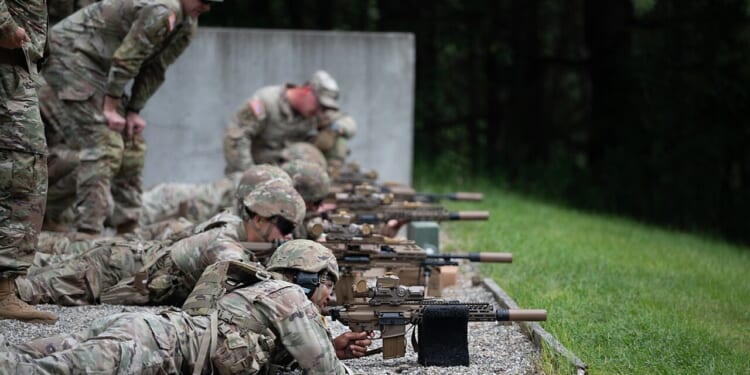National Guard soldiers tested the M250 light machine gun during a “New Equipment Training” (NET) event at Camp Ripley, Minnesota.
Whether National Guard personnel will continue to be deployed to curb violence in some of the nation’s largest cities isn’t clear, but one thing is certain: they likely won’t need to be armed with heavy firepower. Still, just last month, members of the Minnesota National Guard’s 34th Infantry Division began receiving the M250 light machine gun, the small arm designed to replace the aging M249 Squad Automatic Weapon (SAW).
What to Know About the M250 Automatic Rifle
The M250, along with the M7 rifle, was adopted by the United States Army as part of the Next Generation Squad Weapon (NGSW) program in 2022. The M7, based on the SIG MCX-SPEAR, will gradually replace the M4 carbine, the newest military variant of the AR-15/M16 military rifles.
Unlike the M4 and M249, which were two fundamentally different firearms, the M5 and M250 are essentially the same weapon in different sizes to meet specific battlefield needs.
At this point, the 34th ID is focused on the M250, which was introduced during a New Equipment Training (NET) event at Camp Ripley, Minnesota.
According to the United States National Guard, “The NET fielding marks a milestone for the Guard, giving Soldiers hands-on instruction to build confidence and proficiency with the new system.”
The deployment of the M250 also marks the introduction of the new 6.8x51mm cartridge, also known as .277 Fury. The new ammunition size is a middle ground between the legacy 5.56x45mm and 7.62x51mm cartridges used by the US military and its NATO allies. The 6.8mm cartridge could eventually find a place alongside the other NATO standards.
New Technologies Introduced at the National Guard’s “NET” Event
The NET event was led by the Project Manager Soldier Lethality (PMSL) under the Program Executive Officer Soldier (PEOS). It is the office that oversees the United States Army’s small arms and control systems, and the training, including classroom instruction, that focuses on the automatic rifle’s technical features, ballistic capabilities, and optical functions.
Training then proceeded to the range, where the United States Army Marksmanship Unit’s Instructor Training Group (ITG) put the technical knowledge to the test.
“We take PM Soldier Lethality’s technical knowledge and put it into performance on the range,” explained Sgt. 1st Class Chuck Riegel, ITG’s primary instructor for the event. “We show Soldiers everything they learned in class, then focus on the shot process and what they need to do to get hits on target.”
Special attention was paid to the M250’s advanced optics and onboard ballistic system, which the National Guard suggested was “unlike anything many have used before.” Live fire helmets guard members understand the intricacies of the optics.
“The optic ensures every Soldier has the capability to make first-round hits at distance, whether in single shot or burst,” added Riege. “And the cartridge’s terminal performance is incredible — it will defeat pretty much anything they come across.”
The other significant difference is with the cartridge. Guard personnel will need to “adjust to the new ballistics” but also the “extended ranges” the 6.8mm round offers.
“ITG provides the most up-to-date marksmanship instruction and techniques used across the Army,” Riegel explained. “PM Soldier Lethality explains the technical aspects in great detail so Soldiers understand the why behind the new equipment.”
The first active-duty units of the United States Army, including the 1st Battalion, 506th Infantry Regiment of the 101st Airborne Division, began receiving the M250 in March 2024.
To date, around 2,000 M7 rifles and just over 900 M250 automatic rifles have been issued to units.
About the Author: Peter Suciu
Peter Suciu has contributed over 3,200 published pieces to more than four dozen magazines and websites over a 30-year career in journalism. He regularly writes about military hardware, firearms history, cybersecurity, politics, and international affairs. Peter is also a contributing writer for Forbes and Clearance Jobs. He is based in Michigan. You can follow him on Twitter: @PeterSuciu. You can email the author: [email protected].
Image: Wikimedia Commons.


















